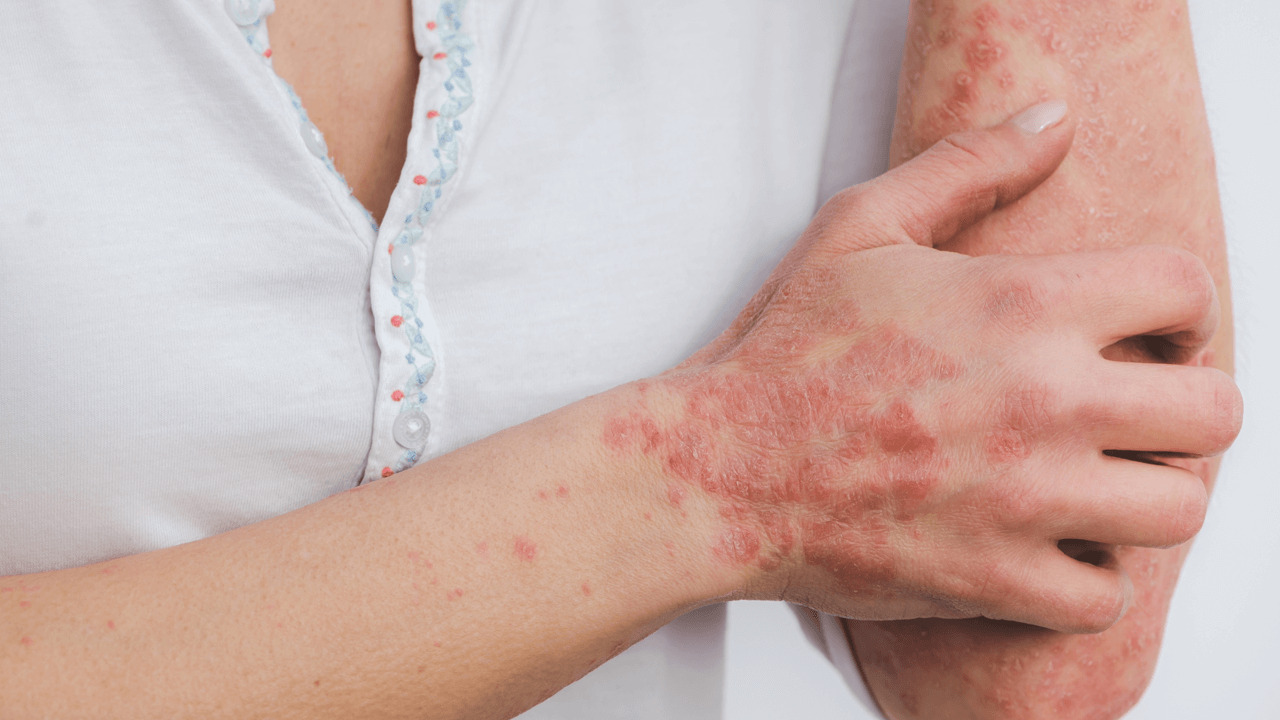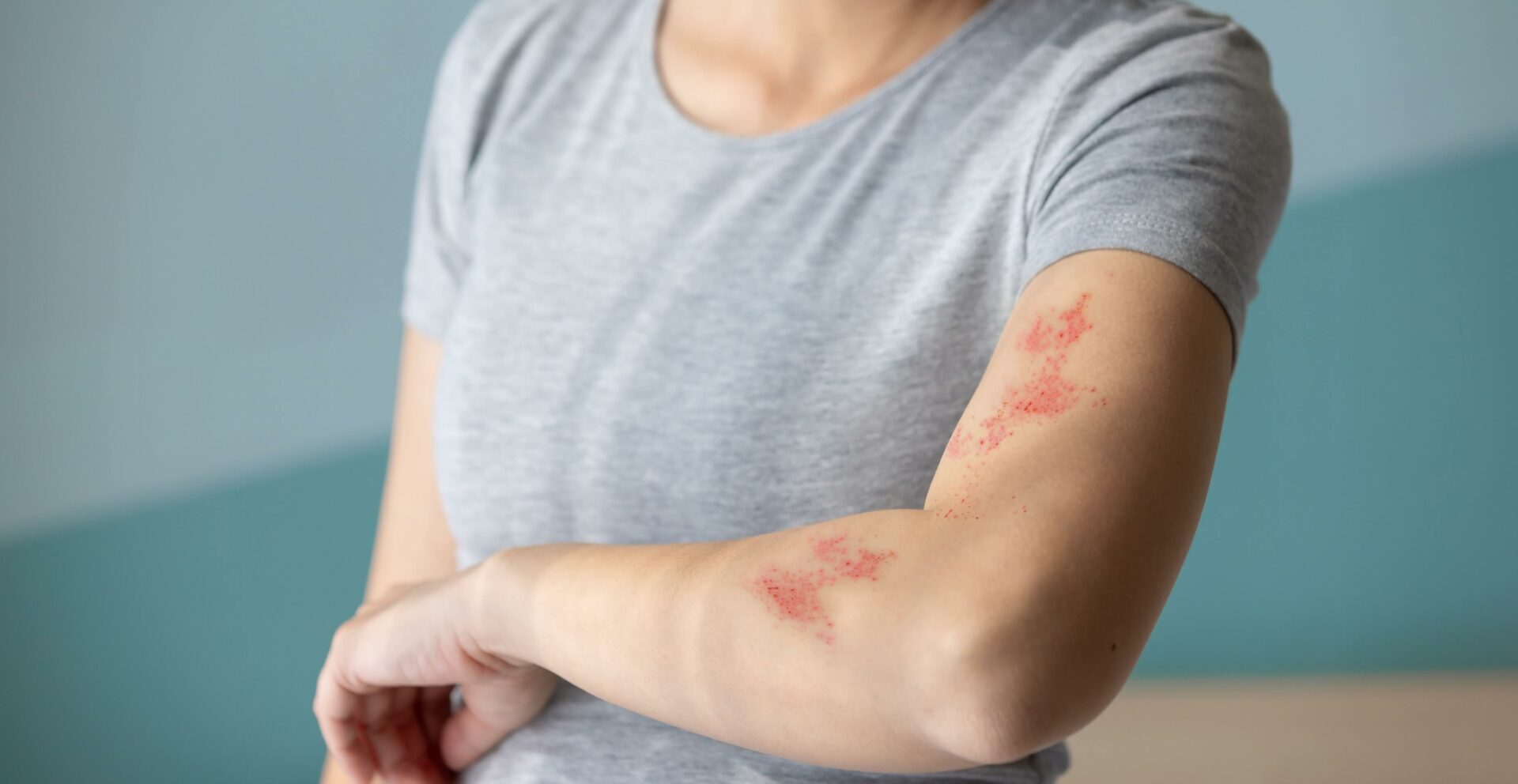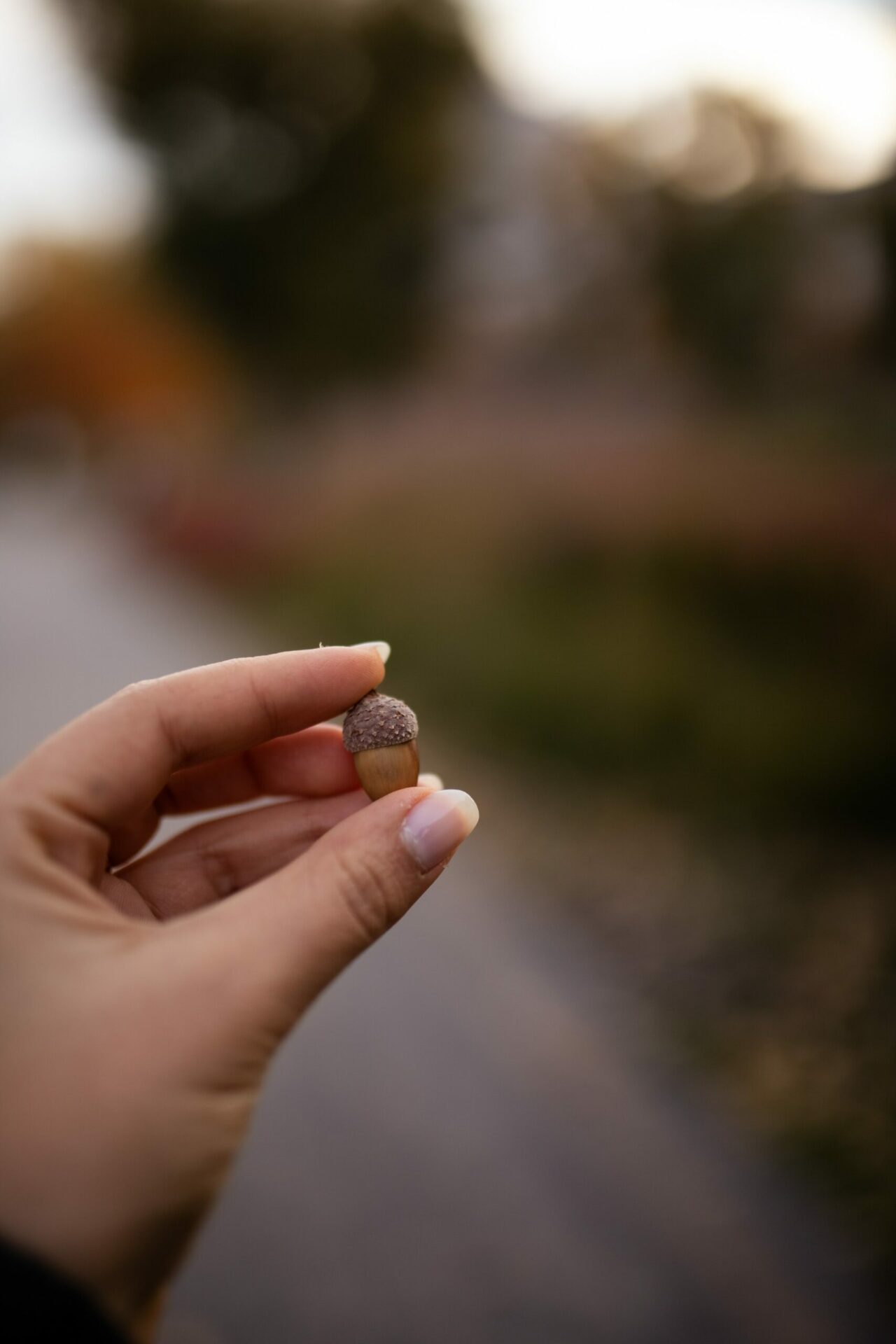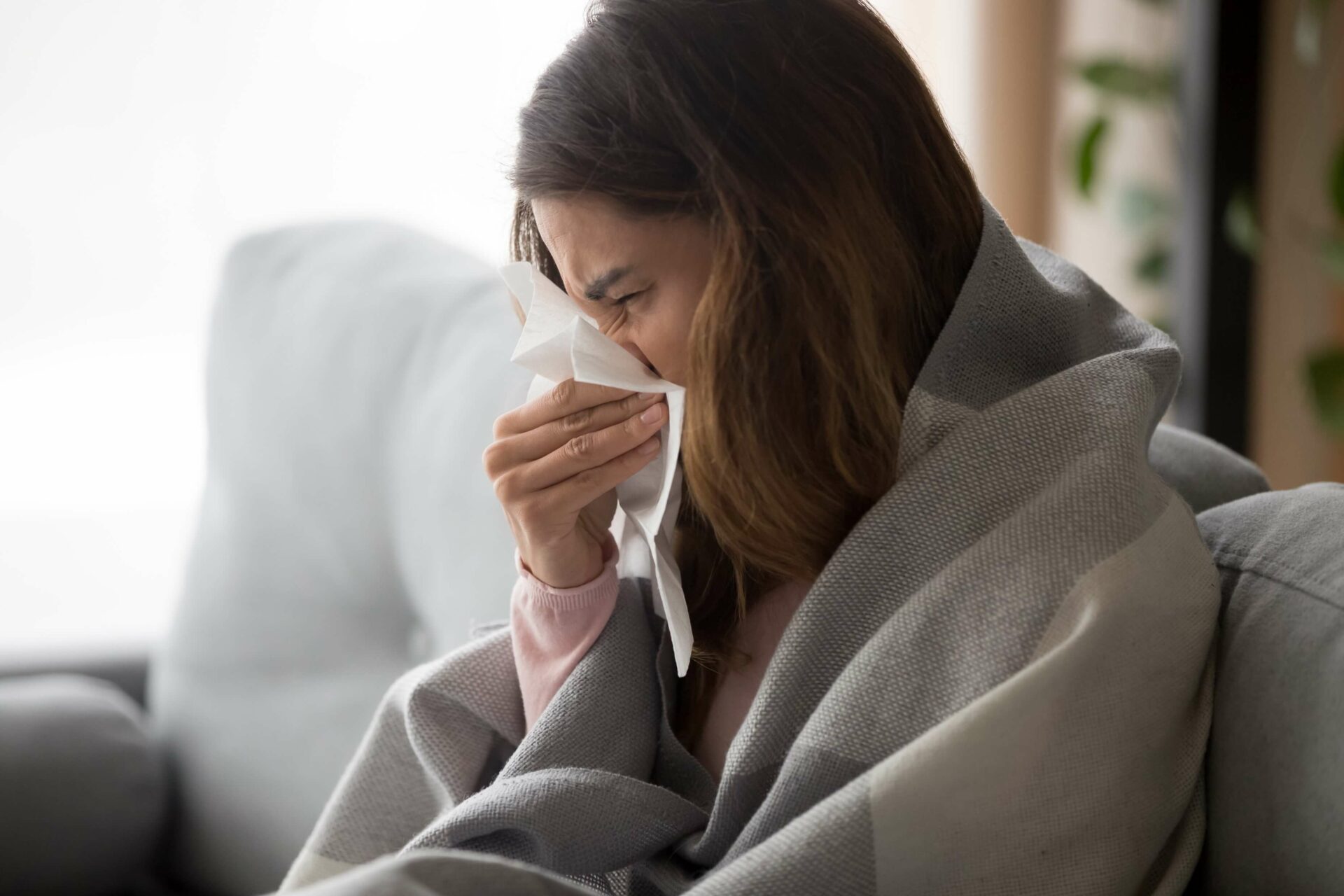A house dust allergy can have a significant impact on daily life without you being aware of the cause. Sneezing in the morning, itchy eyes or a blocked nose are often dismissed as harmless colds - but tiny house dust mites are often behind them. These invisible inhabitants of our beds and upholstered furniture leave allergy-inducing traces that are particularly troublesome for allergy sufferers. In this article, you can find out what exactly is behind house dust allergies, how to recognize them and what measures really help. Get ready to finally breathe freely again!
Table of contents
- What are house dust mites?
- What are the symptoms of a house dust allergy?
- Why do mites trigger allergies?
- How is a house dust mite allergy diagnosed?
- Allergen avoidance - avoiding the triggers
- Drug treatment of a house dust allergy
- Long-term consequences of an untreated house dust allergy
- Medicinal plants for house dust allergy
- Your Zimply Natural house dust mite complex
- FAQs on house dust allergy
1. what are house dust mites?
House dust mites are tiny arachnids that can be found in almost all households worldwide. They belong to the mite family and are so small that they are invisible to the naked eye - on average, a house dust mite measures only around 0.1 to 0.5 millimetres. These tiny creatures feed mainly on dead skin flakes from humans and animals that accumulate in bedding, upholstered furniture and carpets. House dust mites feel particularly at home in warm and humid environments. Temperatures of around 20 to 25 degrees Celsius and a humidity level of 60 to 80 percent provide them with ideal living conditions. For this reason, they are particularly common in areas such as bedrooms and living rooms, especially in mattresses, comforters, pillows and upholstered furniture, where there is constant humidity and a steady supply of food.

2 What are the symptoms of a house dust allergy?
People with a house dust allergy often suffer from a range of unpleasant symptoms. The most common include itchy skin, irritated and watery eyes, constant sneezing and a runny or blocked nose. Many sufferers also complain of breathing difficulties, which can even lead to allergic rhinitis. Asthma can lead.
These symptoms are particularly pronounced in the morning after getting up, as the mites live mainly in mattresses and bedding. The symptoms often worsen in the cold season, as there is less ventilation and the dry air from the heating promotes the spread of allergens. This leads to an accumulation of allergens indoors, as there is no fresh air to transport the allergens outside.
3 Why do mites cause allergies?
The cause of allergic reactions to house dust mites is not the dust itself, but the microscopic remains of the mites - their droppings. House dust mites produce a large amount of excrement in the course of their lives, which mixes with the dust in the household. This mite excrement contains proteins that the immune system of allergy sufferers recognizes as harmful. When these allergy-causing particles are inhaled, the body reacts with an overreaction.
The immune system of people with a house dust allergy classifies these harmless proteins as dangerous foreign substances and begins to produce antibodies. These antibodies bind to certain cells in the body and a chain reaction occurs when they come into contact with the mite excrement again. Cells release chemicals such as histamine, which trigger the typical allergic symptoms such as sneezing, watery eyes, itchy skin or breathing problems. These reactions can occur within a few minutes of contact and belong to the group of immediate-type allergies (type 1).
4 How is house dust mite allergy diagnosed?
There are various tests that are used in medical practice to clearly diagnose a house dust allergy. One of the most common and effective methods is the Prick test.
The prick test is a widely used skin test that is used to determine the patient's sensitivity to certain allergens, such as house dust mite droppings. This test is usually carried out by an allergist. A small amount of the suspected allergen, in this case a mite allergen extract, is applied to the skin of the forearm. The skin is slightly scratched with a fine needle or lancet so that the allergen can penetrate the uppermost layer of skin. If redness or swelling forms at the prick site, similar to a mosquito bite, this indicates that the immune system is reacting to the tested allergen. The prick test is painless and is considered a very reliable method for diagnosing allergies.

5. allergen avoidance - avoiding the triggers
Anyone suffering from a house dust allergy cannot completely avoid contact with the allergy-causing mites, but there are many effective and sensible measures to significantly reduce the mite infestation and thus alleviate the symptoms.
Regular ventilationFresh air is one of the simplest and most effective methods of reducing the number of mites in the home. Regular airing - several times a day for at least 5-10 minutes - reduces the humidity in the room. As house dust mites need a high level of humidity to survive, a dry environment ensures that the mite population shrinks.
Use of allergen-proof covers for beddingAllergen-proof covers, also known as encasings, are specially developed bed covers that trap the mite droppings and prevent the allergens from escaping. These covers are available for mattresses, pillows and comforters and have a fine-mesh structure that traps even the smallest allergens. They help to minimize the amount of allergenic particles that are inhaled during sleep and are a recommended investment, especially for allergy sufferers.
Wash bed linen at 60 degreesAs mites and their allergens are only killed at high temperatures, it is important to wash bed linen regularly at a temperature of at least 60 degrees. This temperature not only kills the mites themselves, but also removes their droppings and other allergens. It is advisable to change bed linen once a week and wash it at a correspondingly high temperature. In addition to bed linen, mattresses and pillows should also be cleaned regularly. Although mattresses cannot be put in the washing machine, they can still be well cared for by vacuuming them regularly or treating them with special mite cleaners. Some pillows are machine washable and should also be washed at 60 degrees at least every two months to reduce mite infestation.
No carpets, upholstered furniture and curtainsAs house dust mites feel particularly at home in soft materials, carpets, upholstered furniture and curtains are ideal breeding grounds for mites. An effective measure against house dust mites is therefore to avoid such textiles. Smooth floors such as wood or tiles are easier to clean and trap less dust and allergens. Choosing furniture without upholstery can also help to reduce the mite population in the home.
Vacuum cleaner with microfiltersNormal vacuum cleaners are often unable to effectively suck up the tiny allergens and can even release them back into the air instead. However, vacuum cleaners with special microfilters or HEPA (High Efficiency Particulate Air) filters are designed to capture and hold even the smallest particles such as mite droppings. It is advisable to regularly clean carpets, upholstered furniture and mattresses with such a vacuum cleaner to reduce mite infestation.
6. medical treatment of a house dust allergy
The treatment of a house dust allergy aims to alleviate the symptoms and to accustom the affected person's immune system to the allergens in the long term. Both medication and long-term therapeutic approaches are used.
AntihistaminesAntihistamines are the most commonly used medication for treating allergic reactions. They block the effect of histamine, a chemical substance that is released during an allergic reaction and causes symptoms such as sneezing, itching and nasal congestion. Antihistamines are available in various forms, for example as tablets, nasal sprays or eye drops.
Nasal spraysNasal sprays are particularly useful for house dust allergies when the symptoms mainly occur in the airways. There are different types of nasal sprays that can help with allergies. Antihistamine nasal sprays work quickly by stopping the allergic reaction in the nasal mucosa. Corticosteroid nasal sprays, which have an anti-inflammatory effect, are also very effective, especially for chronic symptoms such as a constantly blocked nose or sinusitis caused by allergies.
Eye drops. If the house dust allergy mainly affects the eyes and causes symptoms such as itching, redness and tearing, special anti-allergic eye drops can help. They contain antihistamines or anti-inflammatory agents that act directly on the eye area and reduce the allergic reaction there. The drops usually work quickly and effectively alleviate the symptoms.
Allergy tabletsIn addition to local medications such as nasal sprays and eye drops, there are also allergy tablets that have a systemic effect on the entire body. These tablets usually contain antihistamines and are usually taken once a day. They help to control the general allergic reaction and are particularly useful if several areas of the body - such as the nose, eyes and skin - are affected at the same time.
While medication can effectively alleviate the symptoms, it does not combat the actual cause of the allergy. In order to accustom the immune system to the allergen in the long term, a so-called Hyposensitization (also known as specific immunotherapy) should be considered. This treatment aims to make the immune system less sensitive to the house dust mite allergen over a longer period of time.
In hyposensitization, the patient is repeatedly exposed to controlled doses of the allergen - either in the form of injections, tablets or drops. These doses are gradually increased over time to slowly accustom the immune system to the allergens. The aim is to reduce or completely prevent the allergic reaction. The therapy usually lasts three to five years and requires regular visits to the doctor.
Hyposensitization has proven to be very effective, especially for people who suffer from severe allergic symptoms or who are at risk of the allergy developing into chronic asthma. Although it is a time-consuming treatment, it offers the possibility of bringing the allergy under control in the long term and significantly improving the quality of life of those affected
7. long-term consequences of an untreated house dust allergy
If a house dust allergy is not treated over a longer period of time, this can have serious health consequences. In particular, the progression of the allergy and the associated chronic symptoms can significantly impair the quality of life of those affected.
Development of chronic AsthmaOne of the greatest risks of an untreated house dust allergy is the development of allergic asthma. As house dust mite allergens are mainly absorbed via the airways, constant exposure can lead to permanent irritation of the bronchial tubes. This leads to inflammation and a narrowing of the airways, which makes breathing difficult. Without appropriate treatment, the symptoms of sneezing and a blocked nose can develop into chronic breathing difficulties and asthmatic attacks. Such a progression is particularly dangerous, as chronic asthma is a serious condition that can permanently impair lung function.
Reduced quality of life due to Sleep problems and exhaustionIn addition to the direct health consequences, an untreated house dust allergy also has a negative impact on quality of life. Allergy sufferers suffer from symptoms such as sneezing fits, blocked nose or breathing difficulties, particularly at night when the mite load in bed is at its highest. These disrupt sleep considerably and lead to constant tiredness and exhaustion. The resulting insomnia can reduce everyday performance, impair concentration and even have a negative impact on mood.
Without effective treatment, this condition can worsen and lead to chronic fatigue, stress and a general decline in well-being in the long term. It is therefore important to recognize the allergy early and take appropriate measures to treat it in order to maintain both physical health and quality of life.
8. medicinal plants for house dust allergy
On the mucous membranes the Onion antibacterial and is used to ward off and treat infections. It is detoxifying and cleansing. Onions contain quercetin, an antioxidant that acts as a natural antihistamine. It inhibits the release of histamine, which is responsible for allergic reactions, and can therefore reduce the intensity of symptoms.
The seeds of the Balloon vine have a cortisone-like effect, reduce histamine levels and prevent inflammation, so that house dust allergy symptoms can be significantly alleviated. They inhibit the release of histamine, which triggers allergic reactions, and therefore alleviate symptoms such as sneezing and nasal congestion. They also strengthen the immune system, which can reduce allergy sensitivity in the long term.
On the mucous membranes, the Cinnamon an anti-inflammatory potential. Cinnamon has proven its worth as an ingredient in naturopathic mixtures or as an inhalant, especially for diseases of the nasal sinuses. These properties support the immune system and can alleviate inflammation in the airways caused by allergic reactions. Cinnamon also contains antioxidants that help to protect the body from harmful free radicals, which can exacerbate allergic symptoms.
Potassium chloratum is the salt of the mucous membranes. It has an expectorant and anti-inflammatory effect and is used in homeopathy to promote the removal of mucus, particularly in the case of respiratory tract infections or allergic reactions.
With a house dust allergy, the American nard help with its anti-inflammatory and mucolytic properties. It soothes irritated mucous membranes and makes breathing easier by loosening the mucus in the airways.
9. your naturopathic alternative - Zimply Natural House Dust Mite Complex
With natural products, such as the individual spagyric mixtures from Zimply Naturalyou can do something good for your body in the long term!
With the Zimply Natural - House dust mite complex we offer you a customized blend of medicinal plants specifically designed to naturally relieve your dust mite allergy. Our Dust Mite Complex is 100% natural and has been developed to help calm your body's allergic reactions and strengthen your immune system.
This unique blend is ideal for times when you suffer from sneezing, itchy eyes or a blocked nose. The Dust Mite Complex not only supports the relief of acute symptoms, but also promotes your overall vitality and helps you to naturally improve the well-being of dust mite allergies. Whether you have an increased reaction to mites or want to soothe your airways, our Dust Mite Complex can help you breathe freely again and gently control your allergy.
10. FAQs on house dust allergy
How useful is an allergy self-test?
Allergy self-tests can provide helpful initial guidanceif you suspect you are suffering from an allergy, for example to house dust mites. They are easy to carry out at home and provide quick results. However, they are no substitute for a professional diagnosis by a doctor. Self-tests are often less accurate and cannot provide a comprehensive assessment of allergy severity or specific allergens. If an allergy is suspected, it is advisable to confirm the results with a doctor and discuss a precise treatment plan.
Do I have a house dust allergy or a pollen allergy?
Whether you have a house dust or pollen allergy depends on your symptoms and their occurrence. House dust allergies often occur all year round, especially in the morning when you wake up, as mites live in beds and upholstery. Pollen allergies, on the other hand, occur seasonally, usually in spring or summer when certain plants are in bloom. An allergy test at the doctor's, such as a prick test, can determine exactly which allergens you are reacting to.
Does an air purifier help with house dust mite allergies?
Air purifiers can help to filter dust mite droppings and other allergens such as pollen and animal hair from the air. Devices with HEPA filters (High Efficiency Particulate Air) are particularly effective as they remove up to 99.97 % of microscopic particles from the room air. This reduces allergen exposure, which can provide allergy sufferers with noticeable relief from their symptoms.


















